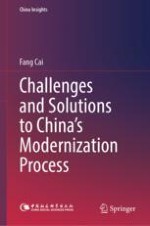2024 | Buch
Über dieses Buch
Focusing on these developing problems and growing troubles, this book mainly discusses economic growth issues related to demographic transition, as well as livelihood issues derived from them and closely related to policy logic. It aims to make theoretical analysis and provide necessary international experience and lessons and put forward targeted policy advice. This book proposes a three-pronged pattern of competition policy, industrial policy, and social policy to achieve productivity improvement and innovation momentum; gives full play to China's super-large market advantages, attractiveness and negotiating position; and promotes each other through domestic and international dual cycles to achieve a higher level of development.
Anzeige
